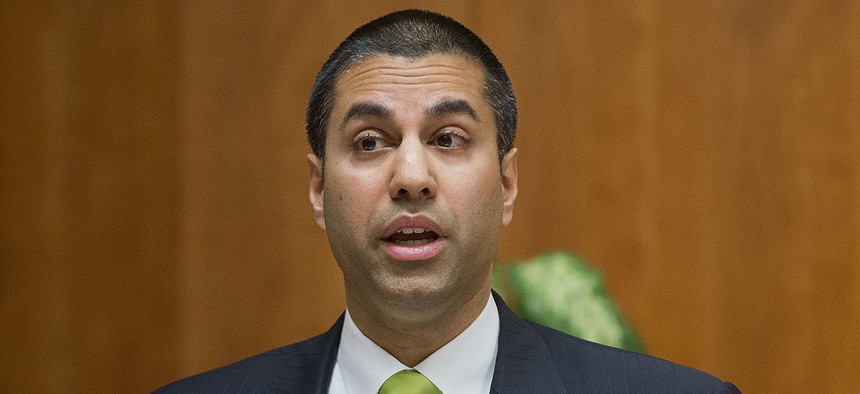FCC Asks for Help Fixing Faulty Broadband Provider Data

Federal Communication Commission Commissioner Ajit Pai Pablo Martinez Monsivais/AP File Photo
The agency wants to correct and refine information on broadband coverage in different areas of the country.
The Federal Communications Commission wants recommendations on how to improve its data collection process for phone and internet access after becoming aware the agency was basing policies on increasingly flawed information.
On Friday, the FCC announced its plan to revise the filing process for Form 477, a data set the agency uses to analyze broadband coverage in different areas of the country and show the public what providers they could access. Internet and phone providers submit data on their coverage in different regions every six months.
Many have called the data set inaccurate and unreliable, reporting a number of instances when the FCC says broadband providers are available in areas they don’t cover.
» Get the best federal technology news and ideas delivered right to your inbox. Sign up here.
“Maintaining updated and accurate data about broadband deployment is critical to bridging the digital divide,” said FCC Chairman Ajit Pai in a statement. “It lets us target our efforts to those areas that most need it, and it allows us to measure our progress in bringing digital opportunity to all Americans.”
The Form 477 program was created in 2000 to help the FCC better monitor the availability of services like high-speed internet and help promote competition between local phone companies. According to FCC Deputy Director of Media Relations Mark Wigfield, the data from Form 477 helps the agency assess its core mission of making communication services available for all Americans.
The agency aims not only to refine the data set and purge incorrect information but also to reassess what data it needs to paint an accurate picture of nationwide coverage. According to Pai, the FCC may be asking for too much data—some of which it may not need for analysis—and that could overburden companies and discourage them from filing properly.
Additionally, the FCC plans to make more of the information it collects, such as providers’ broadband speeds and subscriber numbers, available to the public, where it could potentially inform policy-making around the country.
“New data, if made publicly available, could be used in innovative ways to provide immense public benefits,” said Commissioner Mignon Clyburn. “The opportunities are endless if we collect the necessary data, have accurate data and use that data in the right way.”






